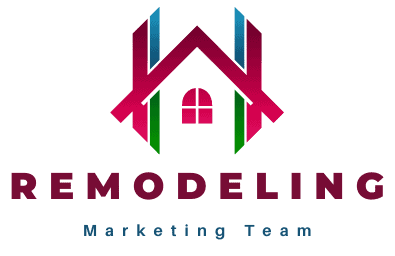Navigating the complexities of client interactions in home remodeling necessitates a sharp, strategic approach to pre-qualification, ensuring that every project embarked upon is a perfect match for your business’s strengths and vision. Pre-qualification serves as the cornerstone of project success, streamlining the allocation of resources—time, expertise, and manpower—toward endeavors that align with the company’s capabilities and strategic goals. This meticulous process not only optimizes project workflows but also maximizes customer satisfaction by setting realistic expectations from the very beginning.
The aim of this guide is to dissect the intricacies of client pre-qualification, equipping remodeling business owners and managers with a detailed framework to enhance their client intake processes. By establishing definitive criteria for assessing potential clients based on financial stability, project scope, and mutual values, businesses can achieve greater operational efficiency and effectiveness. This approach helps to avoid common pitfalls such as miscommunications and project discrepancies, thereby reinforcing the company’s reputation for delivering exemplary results that meet or exceed client expectations.
Additionally, this guide will explore a variety of tools and methods that can be utilized to seamlessly and accurately collect essential client information. From leveraging advanced digital tools like CRM systems to mastering the art of effective communication through strategic questioning and active listening, we will cover how each component contributes to a comprehensive pre-qualification strategy.
By the conclusion of this guide, you will have gained a deeper understanding of the crucial role pre-qualification plays, how to implement it proficiently, and the transformative impact it can have on your business operations and client relationships. Armed with these insights and tools, you will be better prepared to foster more meaningful, productive, and mutually beneficial engagements with your clients, ensuring that each project contributes positively to your business’s growth and success.
Key Takeaways
- Importance of Pre-Qualification: Client pre-qualification is essential for ensuring that projects are feasible, profitable, and align with the company’s capabilities, thereby optimizing resource allocation and enhancing customer satisfaction.
- Strategic First Contact: The initial interaction sets the foundation for the client relationship. Utilizing structured communication forms, such as a discovery call form, ensures that all necessary information is gathered efficiently.
- Criteria for Ideal Clients: Establishing clear criteria based on financial stability, project scope, and compatibility ensures engagements with clients most likely to result in successful projects. This includes assessing financial readiness, project feasibility, and value alignment.
- Leveraging Technology: Digital tools, such as CRM systems and automated forms, play a crucial role in streamlining the pre-qualification process by organizing client data and enhancing communication efficiency.
- Effective Questioning: Developing a strategic questionnaire and mastering the art of asking the right questions are key to understanding client needs and expectations, which helps in assessing project fit and compatibility.
- Legal and Compliance: Clear contracts and strict adherence to privacy laws are necessary to protect both the business and the client, preventing disputes and ensuring a transparent relationship.
- Role-Playing and Scenarios: Using hypothetical client interactions and role-playing exercises helps prepare the team for various client personalities and situations, enhancing their ability to handle real-world interactions effectively.
- Onboarding and Continuous Engagement: A smooth transition from pre-qualification to client onboarding sets the stage for successful project execution. Regular updates and open communication channels build trust and client satisfaction.
- Feedback-Driven Improvement: Establishing a feedback loop and continuously refining processes based on client input ensures that the business adapts to changing needs and improves service quality over time.
- Continuous Improvement Culture: Encouraging staff participation in feedback processes fosters a culture of continuous improvement, driving innovation and enhancing overall business performance.
Understanding the Pre-Qualification Process
Defining Pre-Qualification
Pre-qualification in home remodeling is a systematic approach used to evaluate potential clients before fully engaging in a business relationship. It involves assessing whether a prospective client’s requirements, budget, and expectations are compatible with the services and operational capabilities of the remodeling company. This initial step is critical as it sets the tone for the entire project lifecycle, from planning and design through to execution and final delivery.
Purpose of Pre-Qualification
The primary purpose of pre-qualification is to ensure that the remodeling business commits to projects that are feasible, profitable, and aligned with their expertise. This is not only beneficial in terms of resource allocation but also critical in maintaining a high level of customer satisfaction and operational efficiency. Pre-qualifying clients helps in:
- Mitigating Risk: Reducing the likelihood of project failures due to mismatched expectations or financial constraints.
- Enhancing Efficiency: Streamlining project management by focusing on well-suited, thoroughly vetted projects.
- Building Reputation: Upholding a brand image that reflects quality and reliability by consistently meeting or exceeding client expectations.
The Initial Contact: A Strategic Approach
The first interaction with a potential client is pivotal. This is when the groundwork is laid for the relationship and its future. Utilizing structured communication forms, like the discovery call form, can guide this interaction to ensure that all necessary information is gathered efficiently and courteously.
- Discovery Call Form: This tool is designed to facilitate structured and informative initial conversations with potential clients. Key areas covered in a typical discovery call may include:
- Client Information: Gathering basic information such as name, contact details, and the origin of the inquiry.
- Project Vision and Expectations: Understanding what the client hopes to achieve through the remodeling project.
- Budget and Timeline: Discussing the client’s budget and desired timelines to assess whether they align with the company’s capabilities and ongoing projects.
- Previous Experience: Inquiring about the client’s past experiences with remodeling projects can provide insights into their expectations and how they handle project-related interactions.
Techniques for Effective Initial Interactions
- Setting the Agenda: It is crucial to clearly outline the purpose of the initial meeting or call. This helps set expectations and demonstrates professionalism. A typical agenda might include a brief introduction, a discussion of the client’s needs, an overview of the company’s services, and a mutual exploration of potential fit.
- Active Listening: During the discovery phase, pay close attention to the client’s words and underlying concerns. This will not only help in gathering accurate information but also in building a rapport that can lead to a trusting relationship.
- Empathy and Engagement: Show genuine interest in the client’s needs and concerns. Phrases like “Tell me more about…” or “It sounds like you are looking for…” can encourage deeper discussions and provide clearer insights into the client’s expectations.
Understanding and implementing an effective pre-qualification process is foundational to the success of any remodeling project. By establishing clear communication channels, utilizing strategic tools like the discovery call form, and engaging potential clients with professionalism and empathy, remodeling businesses can significantly enhance their chances of project success and client satisfaction.

Setting the Criteria for Ideal Clients
Identifying and defining the ideal client for your remodeling business is a critical component of the pre-qualification process. By establishing clear criteria based on financial stability, project scope, and mutual values, you can ensure that your business engages with clients who are most likely to lead to successful projects and positive outcomes. Here are some of the various criteria that should be considered when evaluating potential clients.
Financial Criteria
- Budget Compatibility: Ensuring that a client’s budget aligns with the pricing structure of your services is fundamental. This prevents scenarios where financial limitations might hinder the completion of a project according to the desired specifications.
- Initial Financial Assessment: Ask direct questions about the client’s budget range during the discovery call and compare it to typical costs associated with their project scope.
- Financial Commitment: Gauge the client’s willingness to commit financially to the project. This can be discerned through their readiness to make deposits or discuss payment terms.
- Economic Viability: Assess the economic stability of the client to ensure they can sustain funding throughout the project duration. This might include, if appropriate, checking credit scores or asking about financial health in a tactful manner.
Project Scope Alignment
- Services Offered vs. Services Needed: Match the client’s project needs with the services your company specializes in. It’s crucial that your firm possesses the expertise required to fulfill the project’s demands effectively.
- Capability Assessment: Review past projects and experiences to determine if your team’s skill set aligns with the client’s project requirements.
- Resource Availability: Ensure that the necessary resources, including manpower and materials, are available to meet the project timeline and expectations.
- Client Expectations: Clearly understanding what the client hopes to achieve allows you to evaluate whether these expectations are realistic and achievable with the resources and expertise available.
- Detailed Discussion: Engage in detailed discussions about the desired outcomes of the project, specific features, and any unique elements the client wishes to incorporate.
Compatibility Check
- Value Alignment: Assess whether the client’s values align with your company’s. This includes their approach to business, communication preferences, and overall project vision.
- Communication Style: Determine if the client’s communication style is compatible with your team’s. Effective communication is crucial for project success.
- Cultural Fit: Evaluate whether the client’s business culture and ethical standards align with yours. This can influence the working relationship and project execution.
- Long-Term Potential: Consider whether the client has the potential for long-term engagements, which are more valuable than one-off projects.
- Repeat Business Potential: Identify opportunities for future projects with the client. This includes considering their ongoing remodeling needs or other properties that may require work in the future.
- Referral Possibility: Assess the client’s potential to refer other clients to your business. A client well-aligned with your business is more likely to provide referrals.
Setting precise criteria for evaluating potential clients is essential for maintaining the efficiency and effectiveness of your remodeling business. By ensuring that clients meet these criteria, you can better manage project outcomes, enhance customer satisfaction, and ultimately support your business’s growth and sustainability.
Tools and Technologies for Pre-Qualification
The right tools and technologies can significantly streamline the client pre-qualification process in home remodeling. There are a variety of digital tools and communication platforms that can enhance the efficiency and accuracy of gathering and analyzing potential client data, enabling more informed decision-making.
Digital Tools for Client Assessment
- Customer Relationship Management (CRM) Systems: CRM systems are indispensable for managing client interactions, tracking leads, and storing important client information. They provide a centralized platform to monitor client communications, project status, and financial dealings, which is crucial for effective pre-qualification.
- Data Organization: CRMs help organize data related to client interactions, project notes, and historical data, which can be crucial for assessing potential projects.
- Automation Features: Many CRM platforms offer automation tools that can trigger specific actions based on client behavior or input, such as sending follow-up emails or reminders for document submission.
- Automated Forms and Surveys: Utilizing automated forms for initial client inquiries can help capture essential information about budget, project scope, and personal preferences in a structured format.
- Standardization: Automated forms ensure that the same information is collected from every potential client, which standardizes the pre-qualification process.
- Efficiency: These tools reduce the time spent on initial data collection and allow potential clients to provide information at their convenience.
Analytics Tools: Advanced analytics tools integrated with your CRM or website can provide insights into client behavior, preferences, and engagement levels.
- Engagement Tracking: Understanding how clients interact with your online content and communication can indicate their interest level and project seriousness.
- Predictive Analysis: Some tools offer predictive capabilities that can forecast client compatibility and project success based on historical data and interaction patterns.
Communication Platforms
- Video Conferencing Tools: In the home remodeling industry, personal interaction is key. Video conferencing tools like Zoom or Microsoft Teams allow for face-to-face meetings without geographical constraints.
- Personal Connection: Video calls help in building a rapport with potential clients and provide a medium to discuss project details more extensively.
- Visual Sharing: These platforms enable sharing of project designs, plans, and visual inspirations directly with clients, enhancing the discussion and alignment process.
- Project Management Tools: Tools like Asana, Trello, or Monday.com can be used to share project timelines, updates, and collaborate seamlessly with clients who are in the pre-qualification stage.
- Transparency: Sharing project stages and expected milestones with potential clients can help set realistic expectations and build trust.
- Collaboration: Clients can give feedback directly on the platform, which can be valuable during the project scoping and pre-qualification phases.
- Chat Systems and Instant Messaging: Implementing chat systems on your website or using instant messaging apps can facilitate quicker, more informal interactions with potential clients.
- Immediate Engagement: Chat systems provide a way for clients to ask quick questions and for businesses to respond promptly, enhancing client engagement.
- Pre-Qualification Screening: Quick chats can be used effectively for preliminary screenings or to set up more formal discovery calls.
Embracing modern tools and technologies is essential for enhancing the client pre-qualification process in the home remodeling industry. By integrating efficient digital tools and communication platforms, businesses can not only save time and resources but also improve the accuracy of their client assessments and the overall customer experience.

The Art of Asking the Right Questions
Effective communication is critical in the client pre-qualification process, especially in the context of a home remodeling project where understanding client needs and expectations is critical. Creating a high level of customer satisfaction can be achieved by developing a strategic questionnaire and analyzing responses to ensure that potential clients are well-suited for the services offered by your company. By mastering the art of asking the right questions, you can streamline the pre-qualification process and ensure project success.
Developing a Strategic Questionnaire
- Purpose of the Questionnaire: The questionnaire is designed to extract detailed information about the client’s vision, budget, timeline, and previous experiences with remodeling projects. This information is essential for assessing whether the client’s project is a good fit for your business.
- Key Areas to Cover:
- Project Goals and Expectations: What does the client hope to achieve with the remodeling? Are their goals realistic given their budget and timeline?
- Budget Details: What is the client’s budget range? Does this align with the cost estimates for the desired work?
- Timeline Expectations: By when does the client expect the project to be completed? Is this timeline feasible with your current workload and project flow?
- Previous Remodeling Experiences: Has the client undertaken similar projects before? What were their experiences and how did they feel about the outcomes?
Crafting Effective Questions:
- Open-Ended Questions: These allow clients to express their thoughts and expectations in detail. For example, “What are your key objectives for this remodeling project?”
- Behavioral Questions: These can help you understand how a client may handle certain situations based on their past experiences. For example, “Can you describe a time when a previous project did not go as planned? How was it resolved?”
- Direct Questions: Sometimes, direct questions are necessary to gather specific information. For example, “What is your total budget for this project?”
Techniques for Asking Questions
- Creating Comfort: Establish a conversational tone to make the client feel comfortable sharing detailed and honest information.
- Active Listening: Pay close attention to what the client says and how they say it. This not only helps in gathering accurate information but also in building trust and rapport.
- Clarifying and Confirming: Ensure clarity by paraphrasing the client’s responses and confirming your understanding. This helps in avoiding misunderstandings and demonstrates that you are engaged and value their input.
Analyzing Responses
- Identifying Red Flags: Be alert to inconsistencies or unrealistic expectations in client responses that may indicate potential problems down the line.
- Financial Red Flags: If a client’s budget is significantly lower than the typical cost range for the described work, this may lead to challenges.
- Timeline Red Flags: Unrealistic timelines can be a sign of impatience or lack of understanding of the remodeling process, which might complicate project execution.
- Assessing Compatibility: Evaluate the client’s responses to determine how well they align with your business’s capabilities and values.
- Alignment with Services: Do the client’s needs fit the type of services your company specializes in?
- Communication Style Compatibility: Does the client’s preferred style of communication align with how your team operates?
Asking the right questions during the client pre-qualification phase is crucial for setting the stage for successful remodeling projects. Design effective questionnaires and interpret responses to select clients who are the best fit for your services. Equipped with these strategies, you can enhance your pre-qualification process, leading to more successful projects and satisfied clients.

Legal and Compliance Considerations
Navigating the legal and compliance aspects of client pre-qualification and project initiation is essential for protecting both your remodeling business and your clients. These are some critical legal considerations including contracts, agreements, and privacy laws to ensure that all dealings are above board and that your business is safeguarded against potential legal issues.
Importance of Clear Contracts and Agreements
- Purpose of Contracts: Contracts serve as legally binding documents that outline the scope of work, terms of service, payment schedules, and responsibilities of both parties. They provide a clear framework that helps prevent disputes and misunderstandings.
- Elements of a Solid Contract:
- Scope of Work: Clearly describe the work to be done, materials to be used, and any other project specifics.
- Payment Terms: Define payment schedules, amounts, and acceptable payment methods.
- Timeline: Specify project start and end dates, and include provisions for extensions if necessary.
- Change Order Process: Outline how changes to the original plan will be handled, including adjustments to costs and timelines.
- Warranty and Guarantees: Detail any warranties on workmanship or materials provided by your company.
Developing Contracts:
- Legal Review: Always have contracts reviewed by a legal professional to ensure they comply with local laws and regulations.
- Customization: Tailor contracts to each project to address specific client needs and project requirements.
Compliance with Privacy Laws
- Handling Client Data: With the increasing use of digital tools for client management, it is crucial to ensure that personal client data is handled securely and in compliance with privacy laws.
- Data Collection: Be transparent about what data is collected, why it is collected, and how it will be used.
- Data Storage and Security: Implement robust security measures to protect client data from unauthorized access or breaches.
- Client Access: Clients should have the right to access their data and request corrections if necessary.
Compliance Best Practices:
- Regular Audits: Conduct regular audits of your data handling practices to ensure compliance with privacy laws.
- Employee Training: Train employees on the importance of data protection and the legal consequences of non-compliance.
Handling Disputes and Legal Issues
Preventive Measures:
- Clear Communication: Maintain open lines of communication with clients throughout the project to prevent misunderstandings and disputes.
- Documentation: Keep detailed records of all communications, agreements, and changes related to projects. This documentation can be invaluable in resolving disputes.
Resolution Strategies:
- Mediation and Arbitration: Consider including clauses for mediation or arbitration in your contracts as a first step towards resolving disputes.
- Legal Consultation: In cases where disputes cannot be resolved internally, seek legal advice to determine the best course of action.
Understanding and implementing the appropriate legal and compliance measures are crucial for running a successful remodeling business. By ensuring that contracts are thorough and compliant, and by handling client data responsibly, you can protect your business from legal pitfalls and build trust with your clients.
Illustrative Scenarios in Client Pre-Qualification
Understanding the subtleties of client interactions and outcomes through illustrative scenarios can provide valuable insights into the pre-qualification process. Here are some hypothetical situations and role-playing outcomes to demonstrate effective client engagement strategies and the implications of various client responses. By examining these scenarios, remodeling businesses can refine their pre-qualification techniques and better prepare for real-world client interactions.
Hypothetical Client Interaction
- Scenario Overview: Imagine a prospective client, “John,” who contacts your company interested in a complete kitchen remodel. John has a clear vision of what he wants but a budget that seems slightly unrealistic given his expectations.
- Initial Contact: Utilizing a discovery call form, your team gathers basic information and sets up a meeting. During the meeting, John outlines his desires for high-end appliances and custom cabinetry.
- Budget Discussion: The project manager explains the typical cost range for the desired setup and notices John’s hesitation when discussing the upper end of the budget.
- Outcome: The team suggests alternative solutions that can align with John’s budget without compromising too much on quality. John appreciates the honest communication and agrees to revise his expectations.
Role-Playing Outcomes
- Purpose: Role-playing different client scenarios helps your team develop handling skills for a variety of client personalities and situations.
- Scenario 1: A client who is overly optimistic about timeline and budget.
- Approach: Team members practice explaining the realities of remodeling timelines and budget constraints in a tactful, clear manner.
- Learning Outcome: Improving negotiation skills and managing client expectations realistically.
- Scenario 2: A client who has had a bad experience with a previous contractor.
- Approach: Team members focus on building trust, highlighting your company’s commitment to transparency and quality.
- Learning Outcome: Enhancing skills in empathy and reassurance to restore client confidence.
Theoretical Model of Misalignment
- Example: Consider a theoretical client, “Susan,” who expects a full home remodel within a month due to impending family events.
- Analysis: This scenario allows the team to discuss the impracticality of the timeline and explore strategies to either adjust the project scope to fit the timeline or reset the client’s expectations.
- Discussion Points: Importance of clear communication about what is feasible, potential compromises, and the consequences of rushing a project.
Visual Flowcharts
- Tool Introduction: Flowcharts can visually map out decision-making paths based on client responses during the pre-qualification phase.
- Example Flowchart: Includes nodes for client budget adequacy, timeline flexibility, design complexity, and client decision-making history.
- Utility: Helps team members visualize potential paths and outcomes in client interactions, enhancing decision-making skills under varied circumstances.
Feedback Loop Simulation
- Concept: Simulating a feedback mechanism where hypothetical feedback from clients is used to refine the pre-qualification process.
- Implementation: After role-playing exercises, team members provide feedback on the process, suggesting improvements or adjustments based on their experience.
- Benefits: Encourages continuous improvement and adaptability in client handling procedures.
By exploring illustrative scenarios and role-playing exercises, remodeling businesses can enhance their understanding of effective client pre-qualification strategies. These activities not only prepare teams for diverse client interactions but also foster a culture of continuous improvement and client-centered service.
Improving Client Onboarding
Once a client has been successfully pre-qualified, the next critical phase is client onboarding. This stage is pivotal in setting the foundation for a smooth project flow and establishing a strong client relationship. Effective onboarding not only ensures that all necessary information and expectations are aligned but also fosters trust and confidence between the client and your remodeling company. This chapter will discuss strategies for optimizing the onboarding process to maximize client satisfaction and project efficiency.
Seamless Transition from Pre-Qualification to Onboarding
- Strategic Handoff: Ensure that the transition from the pre-qualification team to the project management team is seamless. This involves transferring all relevant client information and expectations clearly and accurately.
- Information Sharing: Utilize CRM systems to share detailed client profiles, including preferences, budget constraints, and specific requests or concerns noted during pre-qualification.
- Kickoff Meeting: Arrange a meeting involving the client, sales team, and project team to review project goals, timelines, and processes. This meeting serves to confirm all parties are on the same page and to formally introduce the project team.
Building Trust and Confidence
- Communication Plan: Establish a clear communication strategy that outlines how often the client will receive updates and through what channels. Regular updates build transparency and trust.
- Regular Updates: Decide on a schedule for project updates (e.g., weekly emails, bi-weekly calls) that keeps the client informed of progress and any challenges.
- Accessible Contact: Provide the client with direct contact information for a dedicated project manager who will handle inquiries and resolve any issues that arise.
Documentation and Agreements: Ensure that all contracts and agreements signed during the onboarding process are comprehensive and reflect all discussions held during pre-qualification.
- Review Sessions: Offer to walk through the contract with the client to explain terms and conditions, ensuring they understand their rights and obligations.
- Clarity and Transparency: Use clear, straightforward language in all documents to avoid legal jargon that might confuse clients.
Client Education and Engagement
- Educational Materials: Provide clients with materials that help them understand the remodeling process, what to expect, and how to prepare for each phase.
- Guides and Checklists: Distribute guides on preparing their home for remodeling, what disruptions to expect, and safety considerations.
- Engagement Opportunities: Invite clients to participate in certain decisions, such as material selections or design approvals, which enhances their involvement and satisfaction with the project.
Feedback Mechanism
- Initial Feedback: After the onboarding process, solicit feedback from clients on their experience. This feedback can help refine the onboarding process and improve client satisfaction.
- Feedback Forms: Use simple, concise forms or surveys to gather client impressions of the onboarding experience.
- Continuous Improvement: Regularly review feedback to identify trends and areas for improvement. Implement changes where necessary to enhance the onboarding process.
Enhancing the client onboarding process is crucial for setting the stage for a successful remodeling project. By focusing on seamless transitions, clear communication, thorough documentation, and client education, remodeling businesses can build lasting relationships that contribute to repeat business and positive referrals.
Continuous Improvement and Feedback
Continuous improvement is a cornerstone of successful business practices, particularly in the home remodeling industry where client expectations and market conditions can change rapidly. The next point of focus is on establishing and maintaining a feedback loop with clients, using this information to refine the pre-qualification and project management processes continually. By embracing a culture of feedback, remodeling companies can adapt more effectively to client needs, enhancing both client satisfaction and operational efficiency.
Establishing a Feedback Mechanism
- Importance of Feedback: Feedback from clients provides valuable insights into their experiences and perceptions of your company’s service and project execution. It is an essential tool for identifying strengths to be leveraged and areas needing improvement.
- Timing of Feedback Collection: Implement feedback collection at multiple stages of the project, including after the onboarding process, at mid-points in the project, and upon project completion.
- Methods of Feedback Collection: Utilize various methods such as online surveys, direct interviews, and informal feedback during regular communications to gather comprehensive insights from clients.
Analyzing Feedback
- Organizing and Reviewing Feedback: Systematically categorize feedback to identify common themes and unique issues. This organization helps in prioritizing areas for improvement.
- Data Analysis Tools: Use data analysis tools to quantify feedback and track trends over time. This can help in making informed decisions based on objective data.
- Team Reviews: Regularly schedule meetings with project teams to review feedback and discuss implications for practice and process adjustments.
Implementing Changes Based on Feedback
- Action Plans: Develop specific, actionable plans based on feedback to address identified issues. Assign responsibility to team members to ensure accountability.
- Short-term Improvements: Implement quick fixes for straightforward issues that can improve client experiences immediately.
- Long-term Strategic Adjustments: For more complex issues, plan strategic changes that may involve adjustments in business practices, training programs, or resource allocation.
Measuring the Impact of Changes
- Before and After Analysis: Compare client satisfaction and project outcomes before and after implementing changes to assess the effectiveness of your response to feedback.
- Key Performance Indicators (KPIs): Define clear KPIs such as client satisfaction scores, repeat business rates, and referral rates to measure the impact of the changes.
- Continuous Monitoring: Establish ongoing monitoring to ensure that improvements are sustained and to identify new areas for enhancement as they arise.
Fostering a Culture of Continuous Improvement
- Staff Engagement: Engage all staff members in the feedback and improvement process to foster a team-oriented approach to problem-solving and innovation.
- Training and Development: Regularly train staff on new procedures and technologies that arise from feedback-driven changes.
- Recognition and Incentives: Recognize and reward staff contributions to process improvements, which can encourage ongoing engagement and innovation.
The practice of continuous improvement driven by client feedback is vital for maintaining a competitive edge and achieving high levels of client satisfaction in the home remodeling industry. By systematically collecting, analyzing, and acting on feedback, and then assessing the effectiveness of those actions, remodeling businesses can adapt more dynamically to changing client expectations and industry standards.
Conclusion
Mastering Client Pre-Qualification in Home Remodeling: A Path to Success
The journey through the complexities of client pre-qualification and project management in the home remodeling industry is fraught with challenges but also rich with opportunities for growth and improvement. This guide has systematically explored the multifaceted aspects of ensuring that each client is the right fit for your business—from initial contact and setting clear client criteria, to utilizing advanced tools for data collection and engaging in effective communication through structured questioning.
Summary of Best Practices
- Effective Pre-Qualification: Establishing a robust pre-qualification process is essential. It ensures that resources are allocated to projects that align well with your company’s capabilities and client expectations.
- Legal and Compliance Vigilance: Adhering to legal standards and respecting client privacy sets a foundation of trust and professionalism, safeguarding both the client and the company against potential disputes and legal challenges.
- Client Onboarding and Education: Enhancing the client onboarding process helps in setting clear expectations, fostering trust, and ensuring client engagement throughout the project lifecycle.
- Feedback-Driven Improvement: Instituting a culture of continuous feedback allows for ongoing refinement of processes and client interactions, which is crucial for adapting to changes in client expectations and market conditions.
The Future Outlook
As the home remodeling industry continues to evolve, so too must the strategies for client engagement and project management. Technology will play an increasingly significant role, with digital tools offering new ways to enhance interaction, streamline processes, and gather actionable insights. However, the human element remains irreplaceable—empathy, clear communication, and a commitment to understanding client needs will always be at the heart of successful remodeling projects.
Final Thoughts
This guide has provided you with the frameworks and tools needed to refine your approach to client pre-qualification and management. Implementing these strategies will not only improve operational efficiency but also enhance client satisfaction, leading to a stronger business reputation and increased growth opportunities.
By continuously adapting to the evolving landscape and integrating client feedback into every phase of your business processes, you can ensure that your remodeling company not only meets but exceeds expectations, standing out as a leader in the industry.
Call to Action
We encourage you to revisit these strategies regularly, assess their effectiveness, and make adjustments as needed. Engage with your team, encourage their feedback on these processes, and foster an environment where continuous improvement is valued and rewarded.
FAQs
What is client pre-qualification?
Client pre-qualification is the process of evaluating potential clients before beginning a business engagement to ensure they are a good fit for the company’s services. It involves assessing factors likefinancial stability, project scope, and compatibility with the company’s capabilities.
Why is pre-qualification important in home remodeling?
Pre-qualification helps ensure that resources are allocated to feasible and profitable projects. It also enhances customer satisfaction by setting realistic expectations and aligning client needs with the company’s offerings.
How can I effectively gather information during the initial client contact?
Utilize structured communication forms such as a discovery call form to systematically collect essential information. This form should cover areas like client expectations, budget, timeline, and previous remodeling experiences.
What tools can help in the client pre-qualification process?
Digital tools like Customer Relationship Management (CRM) systems and automated forms are vital. They help organize client data, streamline communication, and ensure consistency in the information gathering process
What are some key questions to include in a client questionnaire?
Key questions should address project goals, budget limitations, timeline expectations, and past remodeling experiences. Questions should be open-ended to encourage detailed responses and direct to gather specific information.
How do legal considerations impact the pre-qualification process?
Legal considerations are crucial for protecting both the business and the client. Ensure all contracts are clear and comprehensive, and comply with privacy laws to protect client data
How can hypothetical scenarios and role-playing improve client pre-qualification?
They prepare the team for various client interactions and improve handling skills. Scenarios and role-plays help identify potential challenges and refine communication strategies.
What is the importance of client onboarding?
Client onboarding is critical as it sets the stage for the project and builds a foundation of trust and transparency. It involves educating the client about the process, setting clear expectations, and ensuring all necessary information is exchanged.
How should feedback be incorporated into the remodeling process?
Feedback should be collected at multiple project stages and analyzed to identify areas for improvement. Implement changes based on feedback to continuously improve client satisfaction and project outcomes.
Why is fostering a culture of continuous improvement essential?
A culture of continuous improvement encourages staff engagement, fosters innovation, and helps the business adapt to changing market conditions and client needs, ensuring long-term success.
This article is a collaboration between Carl Willis and OpenAI’s ChatGPT. Created on April 29, 2024, it combines AI-generated draft material with Willis’s expert revision and oversight, ensuring accuracy and relevance while addressing any AI limitations.






